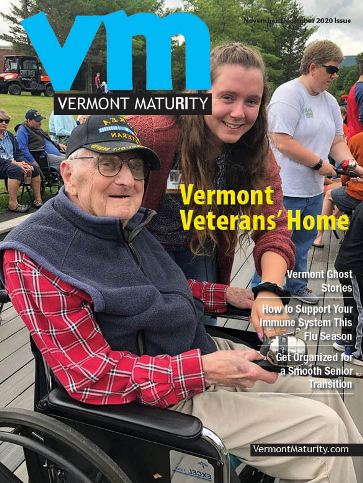
If you are taking good care of yourself and others this New Year, choosing a long-term care facility for a parent, a loved one, or even yourself may be part of your plans. Whether your needs are immediate, or you are preparing for the future, it’s important to anticipate this chapter in your life story.
The type of care you will need, the source of payment, visitor policy, methods of communication with families, number of beds and size, staffing, and whether the facility is privately owned are all key to finding the right fit. The creature comforts of good food, activities, resident engagement, and access to hair stylists and other personal appointments also come into play. What you choose depends on your own needs and priorities.
Timeline
You can plan for your future at any time. Life brings many unexpected twists and turns; settling on where you or a loved one will live can bring peace of mind. Start talking to your partner, children, siblings, parents, or grandparents about what you or they need as soon as you can. When you are the person taking care of your family and making decisions for them, you want to make sure you know what they want. Later you don’t want to be in a position to question if you are honoring their wishes.
Steps to Choosing a Facility
Experts recommend starting online, reviewing websites, and dialing in to social media like Facebook and Instagram to see how facilities relate to their communities. Location is also important if there are people who will come see you or if you hope to visit your loved one. Touring the facility reveals a lot; meet the friendly staff; meet happy, clean, and interactive residents to find out for yourself what life is like at their community. Word of mouth also plays a big part in finding the right place to live, talk to others in your community about a facility’s reputation.
Find a Facility That Aligns with Your Values
Values play out in choices of worship, activities, and friendships, and even the approach to medical care. Most facilities offer a wide variety of religious services. Organizers choose activities to meet residents’ cognitive, social, emotional, physical, and spiritual needs. Medical care is also very individualized. Approaches to worship, activities, and medical care can often be customized based upon an individual’s desires. Facilities are made up of interdisciplinary departments, trained to collaborate to bring the best care to your loved one. When you are looking for the best fit, have a list of questions ready that help home in on specific needs and desires.
Deciding About Personal Care and Care for a Spouse
Your health will determine what type of care you need – but sometimes it’s hard to know what the future holds. Some facilities offer two levels of services on site; to start, assisted living allows residents to age in place with minimal help. When more care is indicated, residents transition to nursing care. There are many good things about choosing a home that has more than one level of care. If you have a partner and one person needs more care than the other, you can be in the same building but access different levels of services. In addition, a smaller facility has fewer people to care for, and depending on staffing levels, personalized attention may be more abundant. The facility you are looking at will also help you decide on what level of care you or a spouse need, and if the fit is appropriate.
Learn How the Facility Deals with Families, Visitors, and Communication
Most facilities have rules about visiting as well as communication. Consider asking how the facility updates family in the event of a change in health, if there is one point of contact, what the visiting hours are, and how policies are modified if COVID or other infectious diseases become a factor. Ask if you will receive regular status updates via text or email, and if the facility hosts routine “town hall meeting” video conference calls for family and friends.
Ask About Staffing Challenges
Over the past few years staffing has been an issue for everyone, and healthcare is no exception. One way to inquire about staffing turnover at a facility is to ask how long the employees have been there. People who work in a facility for many years typically care deeply about their jobs. When one is invested in one’s work, one takes pride and great care one’s duties. Chat with employees if you can. If you find that there are some staff members that have been there for two decades or more, it’s likely that facility is a good place to work – which means it is probably a good place to live.
Does Ownership or Profit/Non-Profit Status Matter
One perspective is that non-profit care organizations can focus on the residents’ needs without budgetary concerns being as much of a factor as they may be for a corporate facility. Non-profits often involve a smaller group of people making decisions about residents whom they know personally, which also lends itself to expediency when time is of the essence.
How to Pay for a Long-Term Arrangement
There are many ways to pay for long term care; some people buy long term care insurance that covers their stay at a residential care or nursing facility, while others fund their stay through private investment or health insurance. Each facility has its own budget that determines how many residents they can admit from each payer source. Many Vermont facilities ask for two years of private pay, and then if the resident applies for Medicaid, they can continue living at the facility. Residents requiring skilled nursing may come in under Medicare rehabilitation benefits, but once they have exhausted that benefit, they must pay privately or apply for long term care Medicaid. Those government plans do not always cover the cost of your stay at a nursing facility. The process is confusing and requires a lot of documentation. Residential care facilities, private attorneys, the Council on Aging, and other organizations can help navigate the process and even advocate for longer stays on the patient’s behalf if they are in rehabilitation and need more time to fully recuperate.
Vicky Parra Tebbetts is a freelance writer who loves all things Vermont. She writes on behalf of Mayo Healthcare, a locally owned nonprofit located in Northfield, Vermont, offering residential care, expert rehabilitation, and skilled nursing services. MayoHC.org, 802.485.3161.
Related Articles & Free Vermont Maturity Magazine Subscription

Intergenerational Relationships: Learning Respect, Earning Understanding
Ways to Pay for Long-Term Care Without Insurance or Savings







This is an excellent article; however I disagree with the piece about for-profit vs non-profit. I have been in business for 13 years and have had clients in many communities around the state. Some non-profits, others for profit. Non-profit does not mean there are no budgetary restrictions, by any means. Every business needs to make a profit to keep their doors open, including non-profits. The term non-profit is a misnomer; there are plenty of very wealthy and profitable non-profits. For profit does not mean there are large corporations making decisions that are not in the best interest of the residents; that it is all about profit. There are non-profits and for-profit organizations we choose for our clients based on their emotional, medical and financial situations. Our decisions are based on the culture of the community, the leadership, the training, hiring the right people, the compassion and passion within the community and so much more.